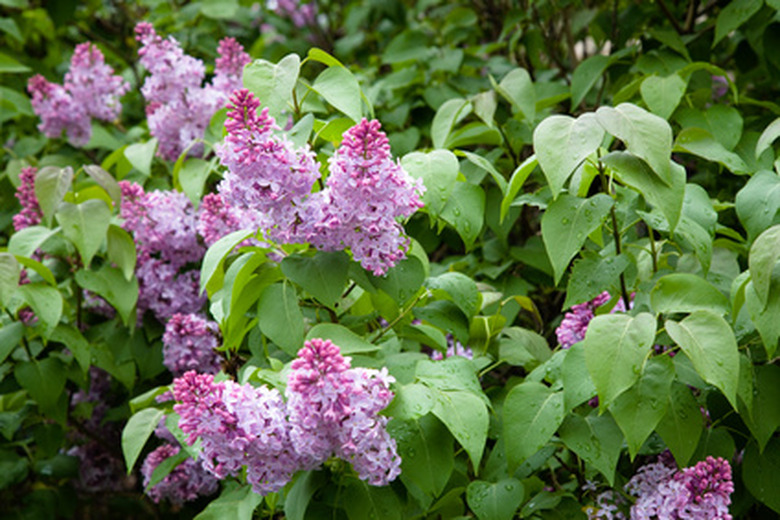How To Plant A Lilac Bush From Seed
Things Needed
- Small bowl
- Newspaper
- Seed tray or peat pot
- Sterile potting mix
- Watering can
- Large flat container
- Clear plastic sheet
Lilacs are a popular flowering bush grown in many parts of the world, including the United States. Native to Asia and Europe, these perennial flowers come in a wide array of colors such as lilac, white, blue and pink. According to North Dakota State University, germinating lilac seeds is a simple process. These easy-to-grow perennials prefer moderate temperatures. Plant a lilac seed in your backyard or garden to decorate a spot with lively blossoms.
Step 1
Collect seeds from a mature lilac plant in a small bowl. The seeds are on dry flower heads.
- Lilacs are a popular flowering bush grown in many parts of the world, including the United States.
- Native to Asia and Europe, these perennial flowers come in a wide array of colors such as lilac, white, blue and pink.
Step 2
Spread a sheet of newspaper on a table and lay the seeds over it in a single layer. Separate large, full seeds from the rest, and keep them aside. Ideally, each seed germinates and grows into a single plant, but choose more seeds than the number of plants you want to grow just to be on the safe side, in case some fail to germinate. Do not worry if most of them germinate; simply thin seedlings out later.
Step 3
Fill seed trays or 4-inch peat pots with sterile potting mix, or select a spot outside in the soil. Push each seed 2 inches deep in the soil, and space them 2 to 3 inches apart.
Step 4
Water the soil deeply with the watering can, until drained water runs out from the drainage holes in the pots. Water the soil frequently. Place a flat container under each pot or tray to collect drained water.
- Spread a sheet of newspaper on a table and lay the seeds over it in a single layer.
- Fill seed trays or 4-inch peat pots with sterile potting mix, or select a spot outside in the soil.
Step 5
Cover the seed starter tray with an inverted seed tray, lid, or clear plastic sheet. If using a pot, cover it with a clear plastic sheet as well to mimic a greenhouse effect, creating humidity and retaining moisture at all times. Place the seed starter tray in an area with a temperature around 41 degrees Fahrenheit for two to three months, or until the seeds sprout.
Step 6
Transplant seedlings to their permanent location outside when they develop a set of two leaves. Dig a hole over a spot that receives five to six hours of sunlight every day, with well-drained and slightly alkaline soil. Lower the seedling into the hole and spread its roots. Space seedlings 5 feet apart to provide them sufficient room to spread and grow. Water infrequently but deeply.
- Cover the seed starter tray with an inverted seed tray, lid, or clear plastic sheet.
- Place the seed starter tray in an area with a temperature around 41 degrees Fahrenheit for two to three months, or until the seeds sprout.
Tip
For best results, plant lilac seeds in spring. Planting any later can stunt their growth the first year. Plant seeds in fall if your area has harsh winters. Add a cup of lime to your soil if it too acidic. Make sure each peat pot has adequate drainage holes in the base.
